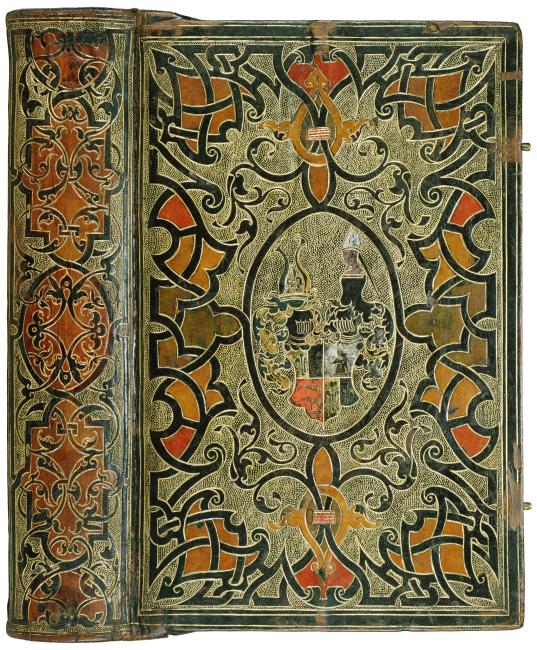
Colophon: Etypōthē en Basileia analōmasi kai epimeleia Iōannou Balderou etei tō apo tēs ensarkou oikonomias tou kyriou hemōn Iēsou Christou, chiliostō pentakosiostō triakostō tetartō, thargēliōnos triskaidekatē.
Edited by Johannes Oporinus, with a prefatory epistle in Latin by Simon Grynaeus.
Dedicated to John More, son of Sir Thomas More.
Platonis Omnia opera
This exceptionally elaborate and splendid binding was created for Marcus, or Marx, Fugger (1529–1597), a member of the Augsburg banking family, who shared the family’s passion for learning, the arts, and elegance. It is abundant in its luxury, especially considering that the ensemble has been made up entirely of very small tools, repeated endlessly. Gommar Estienne, the royal binder at Paris, 1555–59, is probably responsible for this tour de force.
